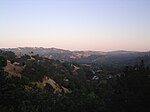Lafayette Library and Learning Center
The Lafayette Library and Learning Center (LLLC) is a library and learning center in Lafayette, California that opened in 2009. The Lafayette Library and Learning Center is also home to the Glenn Seaborg Learning Consortium, a partnership with the region’s leading arts, culture, and educational institutions. The Center includes classrooms which host programs from local learning institutions. It is a part of the Contra Costa County Library system. The Glenn Seaborg Learning Consortium, named after chemist Glenn Seaborg, aims to provide materials, archives, workshops, exhibits, K-12 curricula, lectures, films, and discovery centers from many local institutions such as the UC System, Lawrence Hall of Science, Oakland Museum of California, Chabot Space and Science Center, Commonwealth Club of California, Oakland Zoo in Knowland Park, John Muir Health, Lindsay Wildlife Museum, California Shakespeare Theater, Greenbelt Alliance, John F. Kennedy University, St. Mary’s College, and the UC Institute of Governmental Studies.The mission statement says that the center aims to be a cultural and learning center throughout the community, expanding upon the usual role of a library.
Excerpt from the Wikipedia article Lafayette Library and Learning Center (License: CC BY-SA 3.0, Authors).Lafayette Library and Learning Center
Mount Diablo Boulevard,
Geographical coordinates (GPS) Address Nearby Places Show on map
Geographical coordinates (GPS)
| Latitude | Longitude |
|---|---|
| N 37.892215 ° | E -122.116097 ° |
Address
Don Tatzin Community Hall
Mount Diablo Boulevard
94549
California, United States
Open on Google Maps




